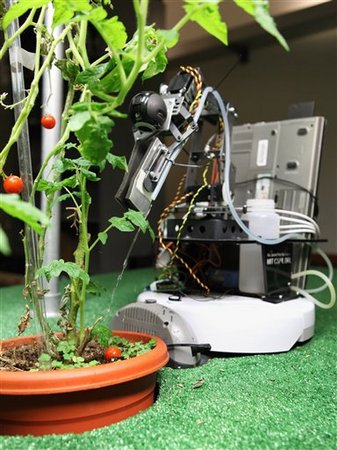
© AP Photo/Steven SenneIn this March 18, 2009 photo, a robot waters a tomato plant in the Artificial Intelligence Laboratory on the campus of Massachusetts Institute of Technology in Cambridge, Mass. (AP Photo/Steven Senne)
Cambridge, Massachusetts -- These gardeners would have green thumbs - if they had thumbs.
A class of undergraduates at the Massachusetts Institute of Technology (MIT) has created a set of robots that can water, harvest and pollinate cherry tomato plants.
The small, $3,000 robots, which move through the garden on a base similar to a Roomba vacuum, are networked to the plants. When the plants indicate they need water, the robots can sprinkle them from a water pump. When the plants have a ripe tomato, the machines use their arms to pluck the fruit.
